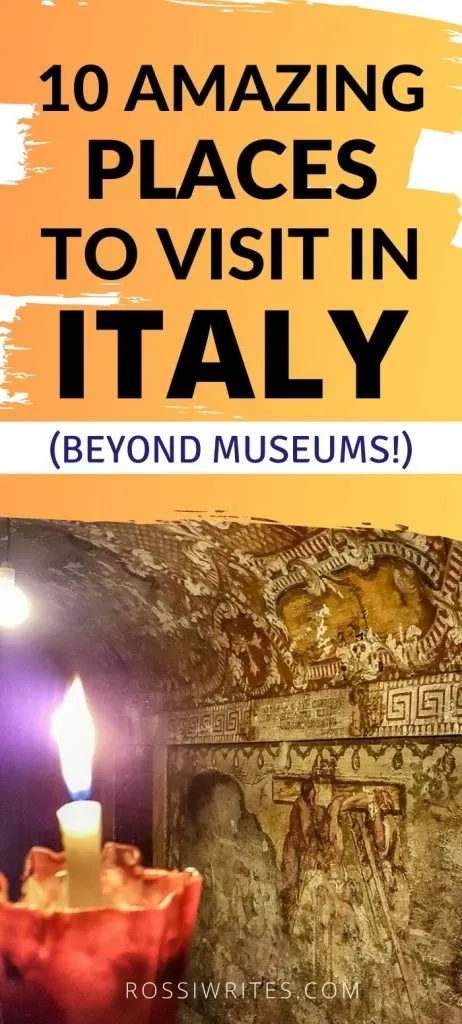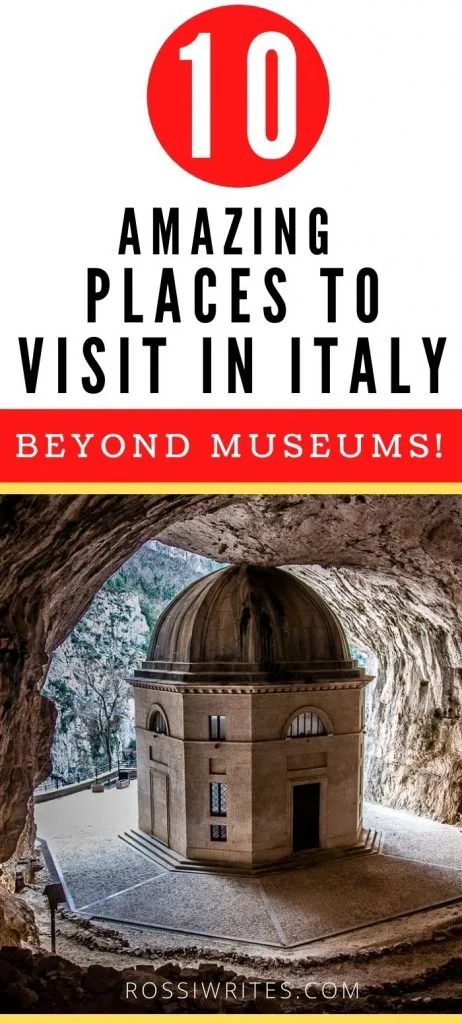Italy is a country rich in hidden gems and here are 10 unique places to visit here beyond the usual tourist spots.
Italy is an exciting country with lots to offer to the curious traveller. From centuries-old libraries and haunted buildings to underground cities and lively markets, there is so much to do and see here.
Quite often though Italy itineraries stick to the obvious top tourist attractions and are densely populated with visits to museums. This is fine but it can quickly become overwhelming and even a bit repetitive. Before you know it, it all blends into one big colourful blur.
Was that a Titian or a Tintoretto you saw there?! Was that fresco from the 13th or the 14th century?!
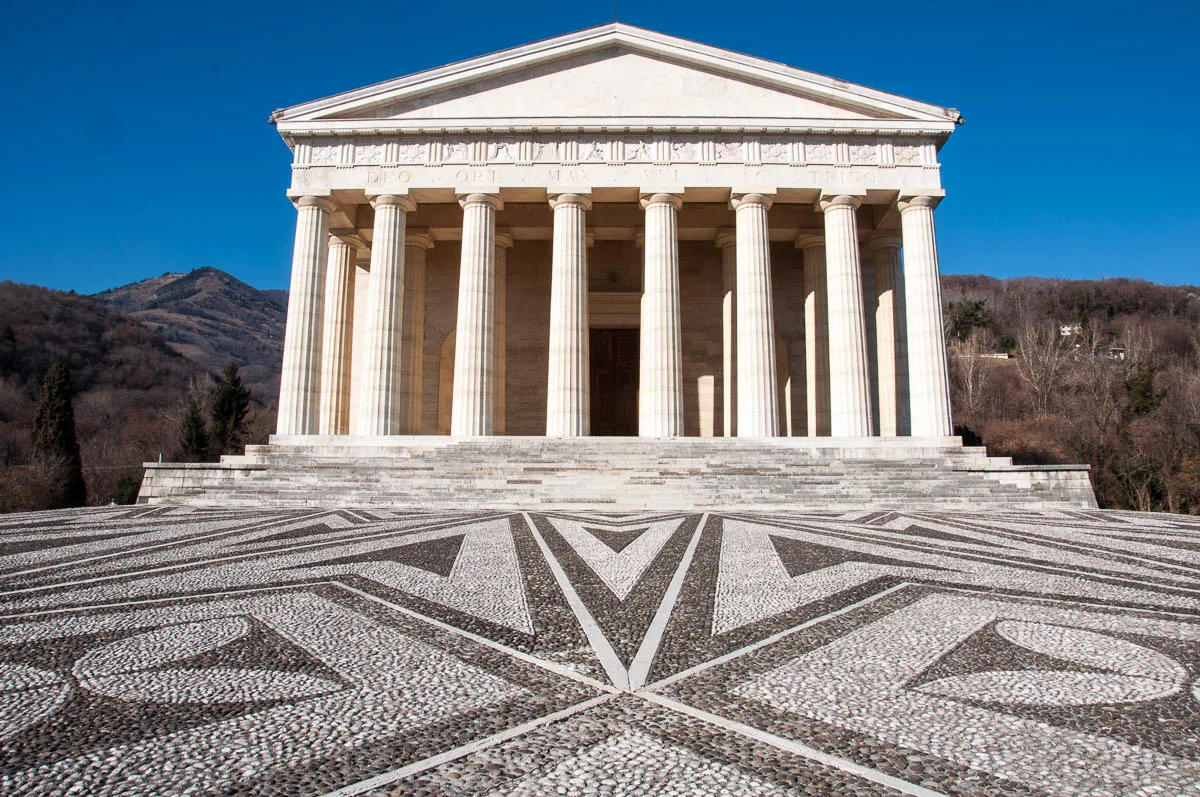
Instead of agonising over such questions, I am sure, you’ll want your memories of Italy to be crisp and filled with wonderful adventures.
The best way to achieve it is to plan your days in Italy to include visits to all sorts of amazing places. By all means, put the Italian museums that interest you at the forefront of your itinerary. Instead of giving them 100% of your time in Italy, however, assign them a quarter and spread the rest between the types of exciting places covered here.
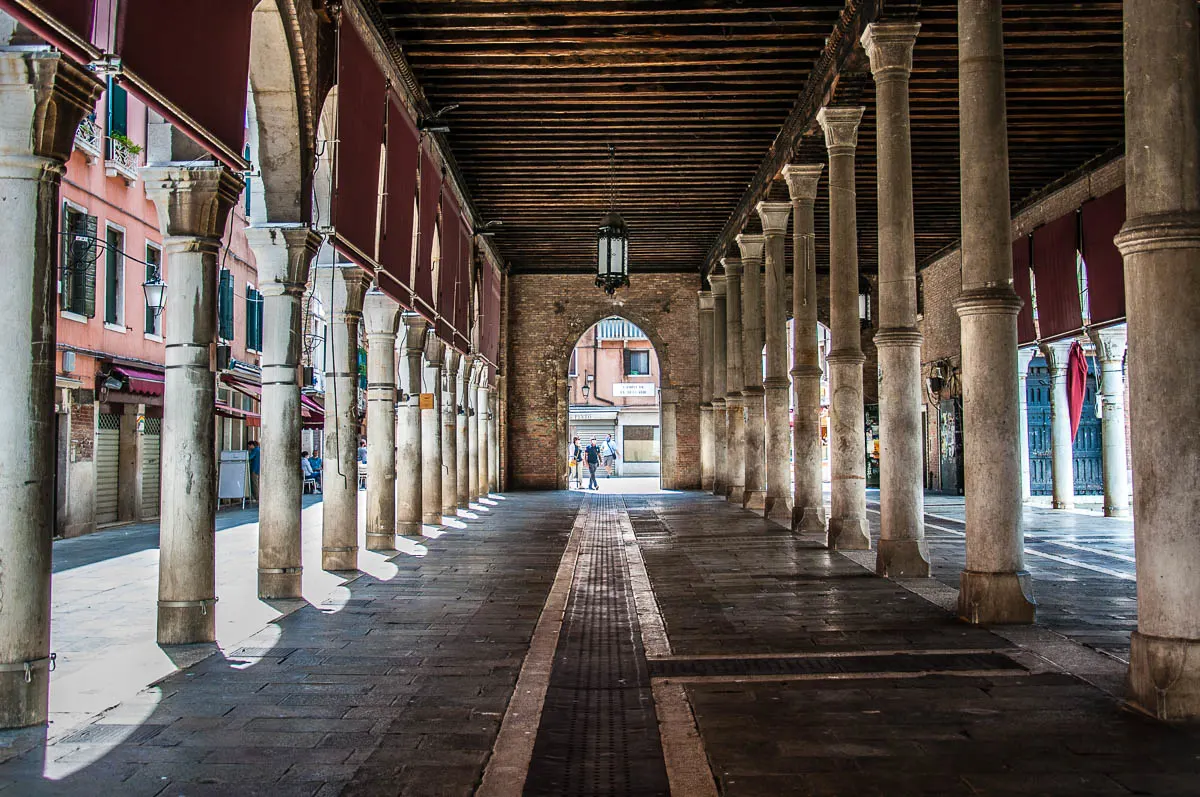
This way you will get to know Italy on many different levels and your experiences here will form the basis of memories to last a lifetime.
I have carefully and lovingly selected the amazing Italian places mentioned in this blog post based on my living in Italy for six years. Time that I spent exploring this beautiful country from many different angles – with art, history, nature, local food, and traditions being among them.
I hope that the information provided here will give you lots of ideas for places to see and things to do when in Italy. For each of the 10 categories of amazing places in Italy I share with you, I have included several specific examples. In total, this gives you over 75 unusual, fun, and unique places to visit in Italy. And you can add many more to make your exploration of this exciting and must-see country the stuff that travel dreams are made of.
Have a look!
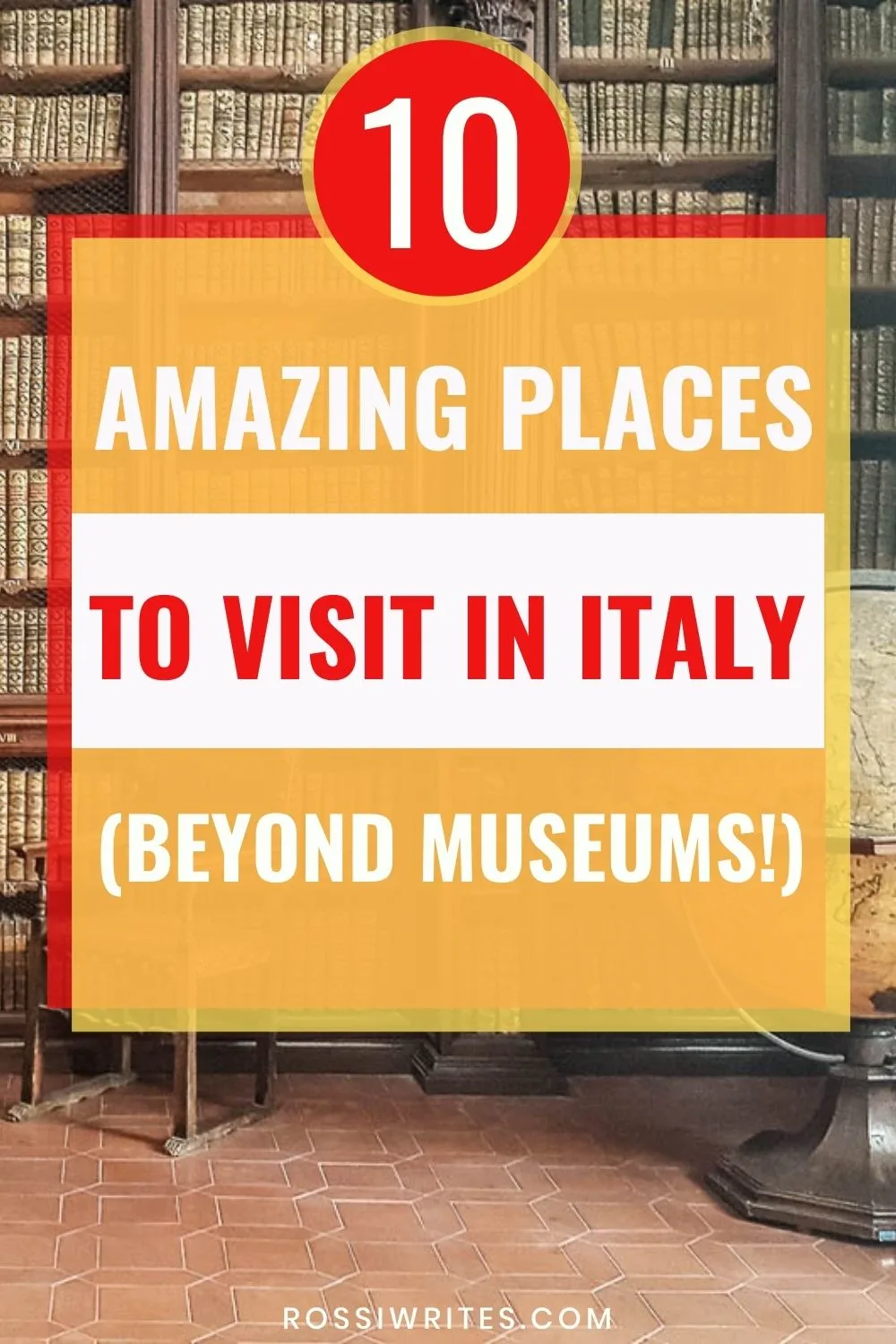
10 Amazing Places to Visit in Italy Beyond Museums
1. Italy’s Historic Libraries and Modern-Day Bookshops
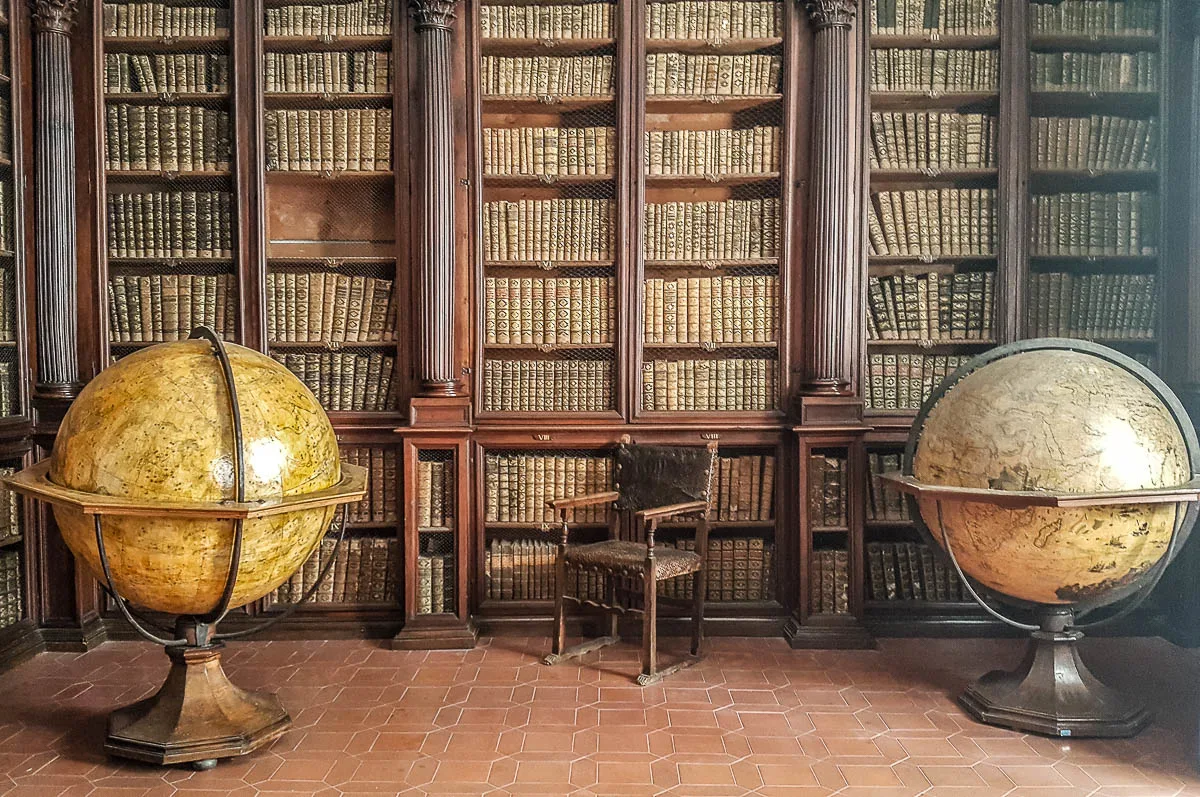
If you love books, you will be in heaven in Italy. There are many historic libraries all over the country that can be visited on a guided tour or individually. Often nestled in lavish buildings which are beautiful to look at and learn about, Italy’s historic libraries have rich collections of medieval manuscripts and centuries-old printed books.
In addition, specialised exhibitions, events, and even concerts are often organised there.
Some of the most interesting historic libraries to visit in Italy are:
- Biblioteca Angelica in Rome
- Monumental Rooms of Biblioteca Marciana in Venice
- Biblioteca Ambrosiana in Milan
- Historic Rooms and Library of the Archiginnasio of Bologna
- Biblioteca Marucelliana in Florence, Tuscany
- Biblioteca Capitolare in Verona which is the world’s most ancient library in the field of Latin culture
- Biblioteca Federiciana in Fano, Marche (pictured above)
Yet, there are dozens if not hundreds of historic libraries all over Italy. Every Italian city, town, and even monastery has a priceless selection of manuscripts, codices, incunables, books, and periodicals offering a glimpse into history, philosophy, art, and sciences.
In addition to historic libraries, in Italy, you will also find many curious bookshops where you can spend an hour or two browsing through new and old editions of exciting books. From the tiny bookshops of Venice where knowledgeable booksellers will help you fill in the gaps in your knowledge about Venetian history to the modern bookshops of Milan and Rome, books are everywhere in Italy.
Even if you don’t speak Italian, don’t be discouraged to visit these exciting places. Often, you will find that they sell some books and periodicals in English and other languages, too.
2. Birthplaces and Final Resting Places of Italy’s Famous Artists, Composers, and Writers
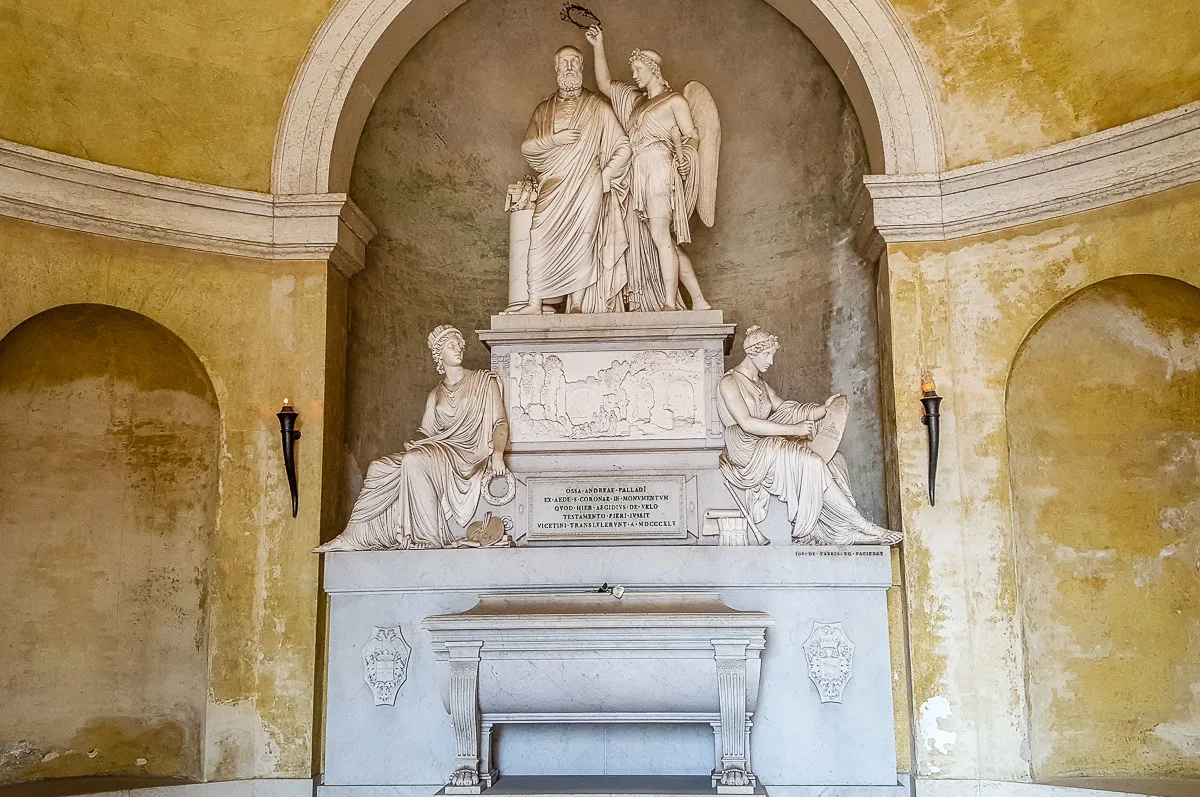
Italy has this uncanny ability to bring you unmeasurably closer to people that have shaped our world.
Many world-famous artists, composers, and writers were born and died in Italy. By visiting the places where they lived and worked, we can understand better what motivated and inspired them.
Use a portion of your time in Italy to visit the birthplaces and the final resting places of people whose works have made the world a better place.
Here are some starting points:
- architect Andrea Palladio‘s birth house (not open for visits) in Padua and tomb in the Cimitero Maggiore in Vicenza, Veneto (pictured above)
- sculptor Antonio Canova‘s birth house and tomb in Possagno, Veneto
- artist Canaletto‘s tomb in the Church of San Lio in Venice, Veneto
- artist Cima da Conegliano‘s birth house in Conegliano, Veneto
- artist Giorgione‘s house in Castelfranco Veneto, Veneto
- sculptor and artist Michelangelo‘s birth house in Florence, Tuscany
- humanist scholar and poet Petrarch‘s house and tomb in Arqua Petrarca, Veneto
- composer Verdi‘s villa in Sant’Agata, Emilia-Romagna.
I loved visiting the birthplaces and the final resting places of Italy’s great creators during my time living in the Northern Italian city of Vicenza. I particularly loved Cima da Conegliano’s house where you can see the artist’s handwriting on one of the walls. A dream come true for me was visiting the birth house of Michelangelo in Florence. In my teens, I had read The Agony and The Extasy and had spent many years wanting to see the places described in this seminal book.
Here are three blog posts I wrote after visiting the house where the famous artist Titian was born, the house where the famous humanist scholar and poet Petrarch spent the last five years of his life, and the birth house and the final resting place of Canova – a Neoclassical sculptor of rare talent. I hope that you will enjoy reading them:
- Point 1 in Pieve di Cadore’, Italy – 6 Things to Do in Titian’s Birthplace
- The Sunset that Petrarch Enjoyed
- Discovering Canova – Italy’s Neoclassical Sculptor
3. Italy’s Artisan Studios and Craft Workshops
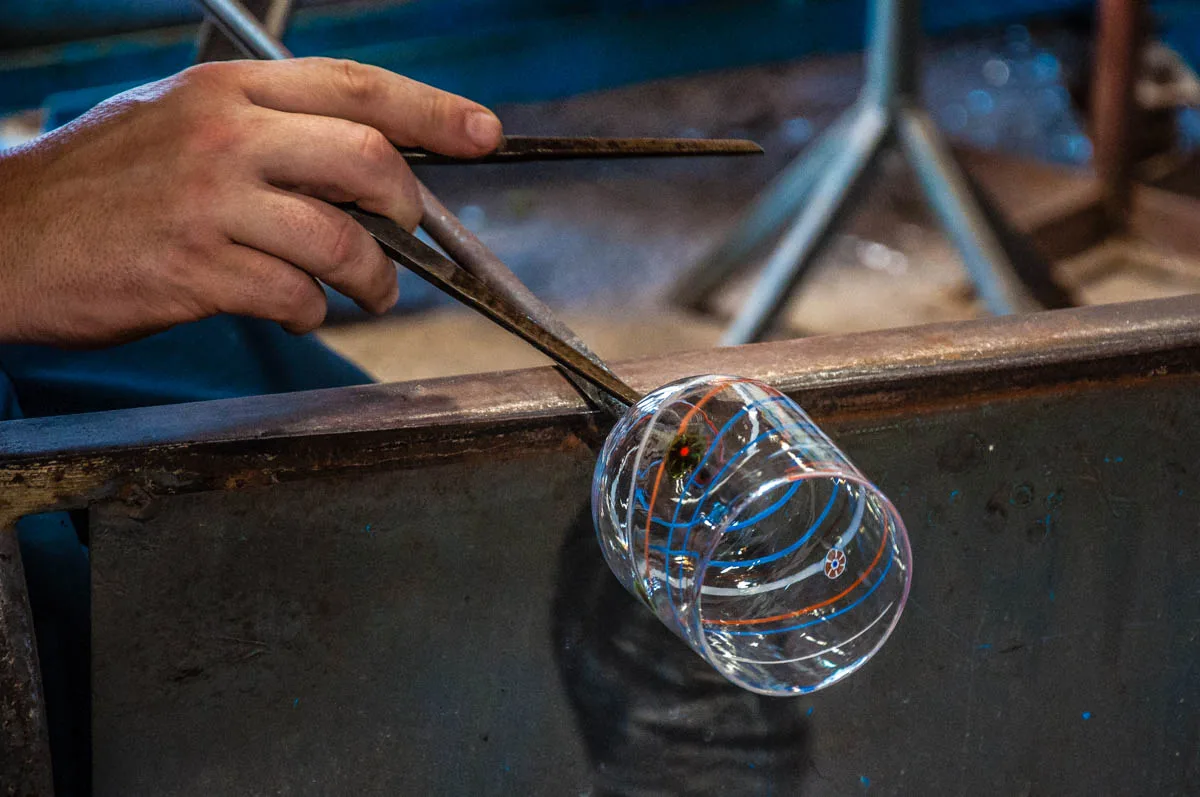
Italy preserves the ancient know-how of many old crafts. From pottery and lace-making to book-binding and glass-blowing, many craft techniques were created and/or perfected here throughout the centuries.
Artisan studious are some of the most amazing places to visit in Italy. Spending time with the craftsmen as they work is a wonderful way to learn about the history of many items that we nowadays take for granted and buy mass-produced.
Seeing actual glass objects being made only with the power of the human breath and hand, observing a pottery maker shaping the clay in a quiet almost-meditative state, watching how paper is made the old way are all unique experiences that you can have in Italy.
The best bit is that many Italian artisans give you a chance to learn from them. You can see a short demonstration or join them behind the pottery wheel or the textile loom and absorb their knowledge and skills with your own hands.
Here are some ideas for artisan studios to visit and craft workshops to take in Italy:
- bookbinding in Ancona, Marche
- ceramics in Florence, Tuscany
- glassmaking on the island of Murano, Veneto
- papermaking in Fabriano, Marche
- terracotta modelling in Fratte Rosa, Marche
- textile art in Ancona, Marche
- violin-making in Cremona, Lombardy
- weaving in Macerata, Marche
Alternatively, you can visit one of the many historical reenactments held in the medieval walled towns of Italy. They always feature artisans demonstrating old crafts and techniques – arrow making, coin minting, even wool carding. It’s like a temporary open-air museum.
Have a look at this blog post I wrote about the craftsmen preserving Italy’s old crafts. I hope that you will enjoy reading it:
4. Italy’s Daily and Weekly Markets
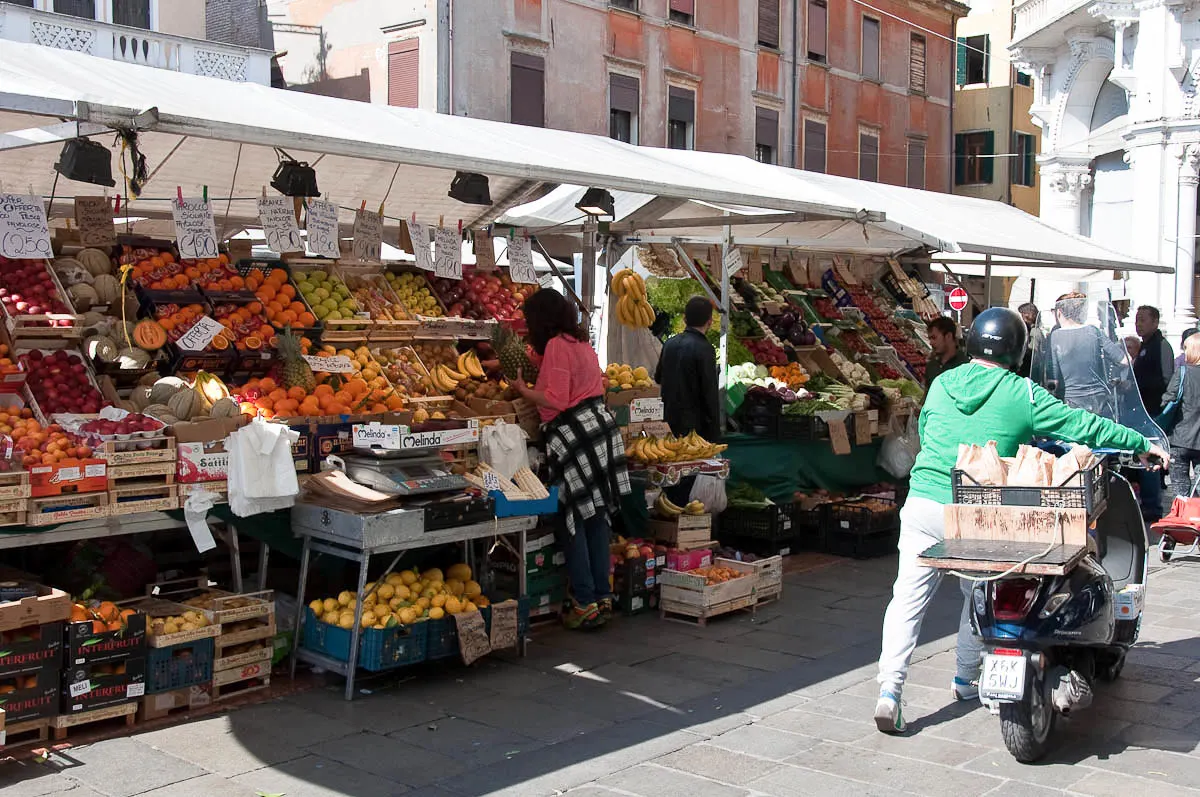
Markets are some of the best places to experience Italy authentically. They are held either weekly, twice a week or even daily in every town and city of Italy. Stalls are set up early in the morning on historic piazzas.
Fresh fruit and vegetables are artfully displayed on the large wooden tables. Sellers of curtains, fabrics, and haberdashery stand side by side with sellers of cooking pots, pans, and all sorts of kitchen utensils. Further down the street are parked big vans with removable sides. They function as portable fish shops, dairy shops, and even flower shops.
Walking around, watching the Italian people sell and buy makes you feel truly present and energised. Before you know it, you have already bought two kilos of peaches, a chunk of local cheese, and a whole sausage to take back to your accommodation.
And that’s not all. There are many different types of markets in Italy. From fresh fruit and veg to antiques, you can find and buy everything and anything at them. In this blog post, I list 11 types of markets you can enjoy here. I hope that the information provided will inspire you to discover many amazing places to visit in Italy:
In addition, consider these Italian market experiences, too:
- Food and Market Tour in Livorno, Tuscany
- Central Market in Florence, Tuscany
- Farmers’ Market in Como on Lake Como, Lombardy
- Food and Market Tour in Testacchio neirghbourhood of Rome, Lazio
- Food and Market Tour in Venice, Veneto
- Historical Markets and Street Food in Palermo, Sicily
5. Italy’s Perfect Towns
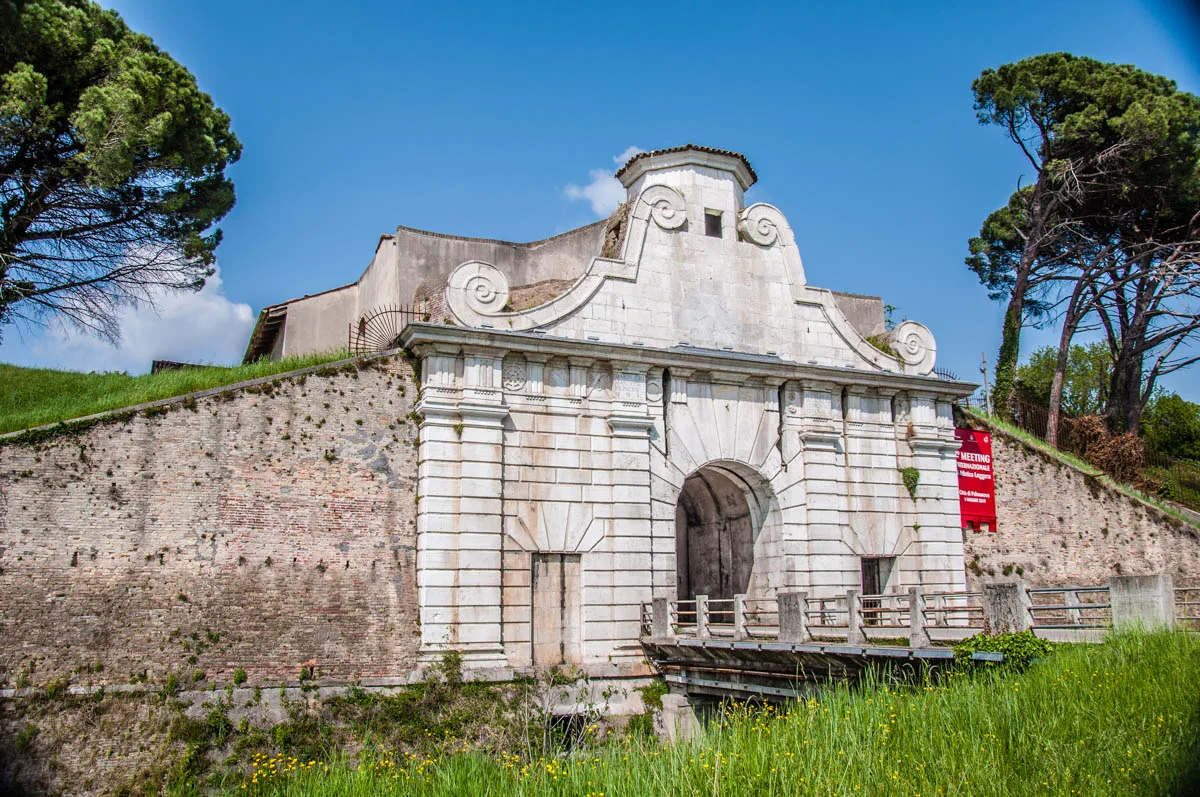
There are many wonderful and beautiful places in Italy to fall in love with. A special mention here deserve those Italian towns that have been built and developed following a very precise plan in mind.
The tenets of perfect town building and ideal urbanisation have been playing on the minds of Italy’s architects, military strategists, aristocrats, and industrialists for centuries. In some cases, they were looking to achieve sublime harmony and beauty, while in others they wanted to erect a completely unassailable fortress.
This has inspired the creation of several Italian towns with unique urban plans. Here are a few to put on your Italy itinerary:
- Palmanova, Friuli-Venezia Giulia (pictured above) – this is a perfect example of a Renaissance star-shaped fort. The town of Palmanova was built by the Republic of Venice in 1593. Nowadays, its fortifications are a UNESCO World Heritage Site.
- Sabbioneta, Lombardy – this is another perfect town that is on the UNESCO World Heritage List. Sabbionetta was built by the Gonzaga rulers of the nearby city of Mantua. They were obsessed with the urban planning rules of the Italian Renaissance.
- Crespi d’Adda, Lombardy – this is a workers’ village built in the last quarter of the 19th century. It has a perfect geometric structure and it is considered to be the most complete and best preserved example of a workers’ village in Southern Europe. Crespi d’Adda was placed on the UNESCO World Heritage List in 1995.
6. Agriturismi – Italy’s Small Independent Farms
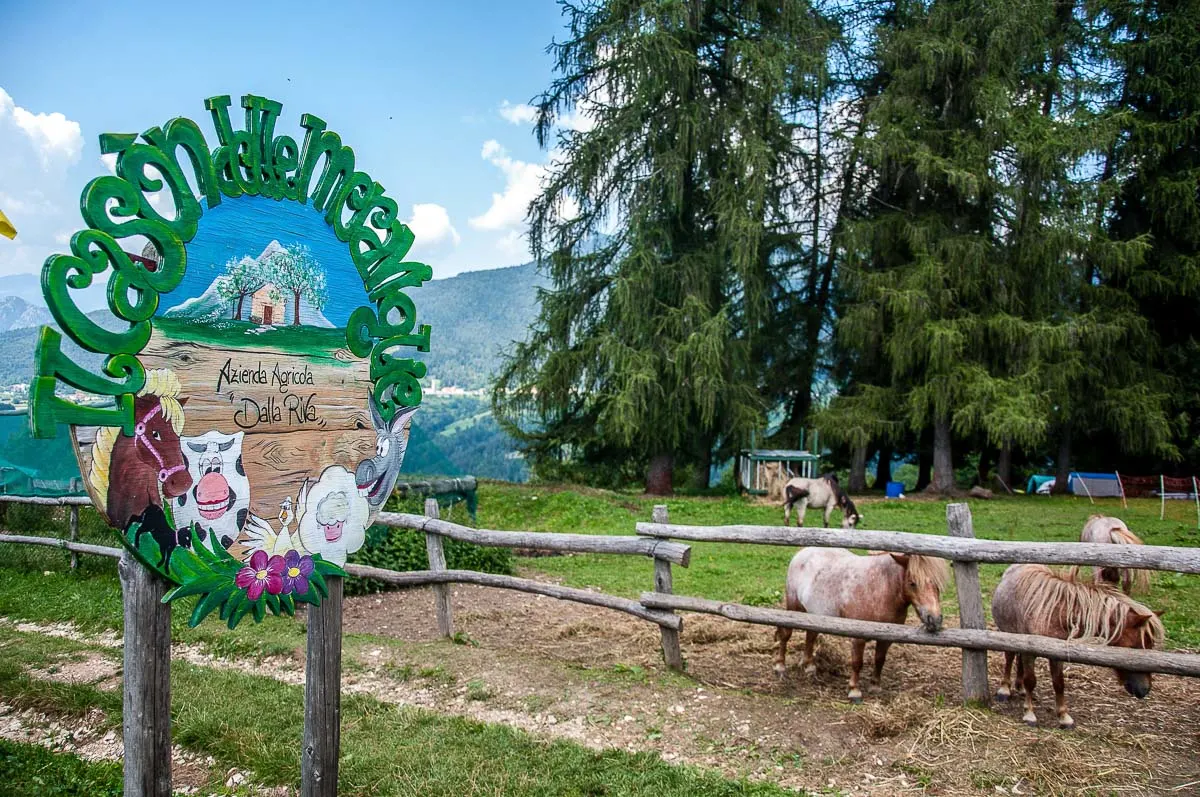
Italy is dotted with small independent farms. They are a delight to visit, eat at, and even spend the night in.
Known as agriturismo in Italian, a small independent farm in Italy produces seasonal fruit and vegetables and/or rears domestic animals. In addition, the agriturismi often organise thematic events, food fairs, and different agricultural experiences.
An agriturismo is a truly amazing place to visit in Italy. Even if agriculture doesn’t really interest you. Visiting one is a great way to experience authentic Italian traditions and to savour proper, zero km Italian food.
Here are a few things you can do in an Italian agriturismo:
- buy fresh locally grown produce – from seasonal fruit and vegetables to eggs, dairy products, and meat;
- eat freshly cooked dishes in the onsite restaurant or trattoria;
- get close to the animals;
- take part in a cooking class or cheesemaking demonstration;
- enjoy a food, wine and/or olive oil tasting;
- you can even spend the night as hundreds of agriturismi around Italy offer comfortable accommodation options at very reasonable prices.
Based on my personal experiences in Italy, I can wholeheartedly recommend:
- Azienda Agricola Il Cason delle Meraviglie in Asiago, Veneto (pictured above) – they organise wonderful activities allowing kids and adults to get close to domestic animals. I loved their workshop on bees and candlemaking.
- Azienda Agricola Desy in Vicenza, Veneto – here you can buy freshly made dairy products and see cows, goats, and donkeys.
- Maso Eden in the Autonomous Northern Italian province of Trentino – here you can go on a hike with llamas and alpacas through the lush forests. A great experience!
Here are some more specific activities you can enjoy in Italy’s agriturismi:
- Bike tour to citrus groves and rural farms from Palermo, Sicily
- Animal farm tour near Palermo, Sicily
- Farm visit and olive oil tasting near Pescara, Abruzzo
- Pistachio and Olive Oil Farm Tour in Bronte, Sicily
- Private wine tasting and lunch in an organic farm in Tuscany
- Cooking class in an Apulian farmhouse in Pezze di Greco, Puglia
- Private tour of a goat cheese farm near Todi, Umbria
- Franciacorta vineyards and farmhouse walking tour from Milan, Lombardy
- Organic wine tasting and farm tour near Lake Garda, Lombardy
7. Italy’s Underground Cities and Caves
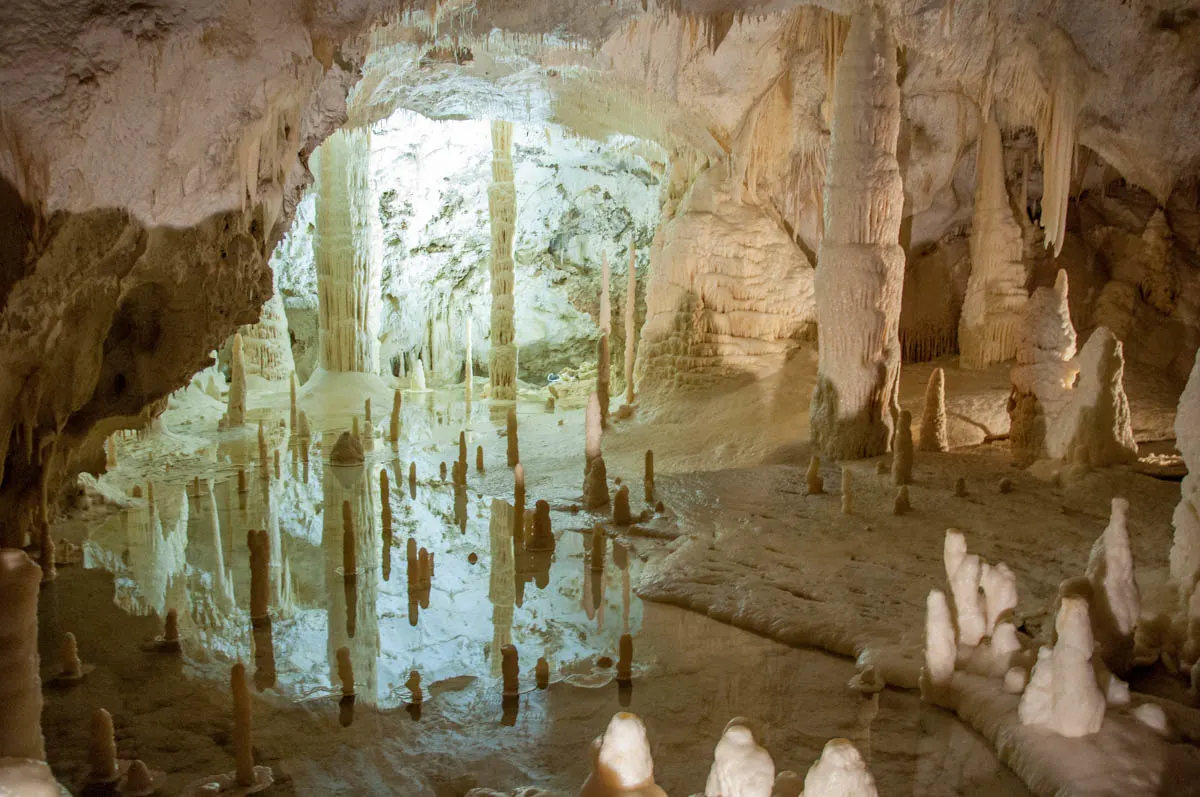
For all its beauty on the surface, Italy hides many secrets underground. Archaeological ruins, excavated rooms and tunnels, creepy catacombs, and natural caves are only some of the amazing places you can descend to here for an experience of a lifetime.
In some cases, the size of what’s underground is larger than the town on the surface. Such is the case of the small town of Camerano near Mount Cornero and the Adriatic Sea in the Central Italian region of the Marche. Underneath Camerano, there is a mysterious underground town that was built in ancient times by the Picentes tribe. Bas-reliefs, friezes, and religious symbols decorate the many galleries, tunnels and niches here.
In the nearby town of Fano also in the Marche, there is an expansive underground area where the ruins of a Roman amphitheatre and a Roman marketplace are preserved.
In the town of Fermo (again in the Marche), you will find the largest ever Roman cisterns. They were built in the 1st century AD. The cisterns comprise 30 underground rooms divided into three lines and have an area of 2,200 sq. m.
Italy’s large cities also hide many curious things underneath their buildings and streets. Rome, Turin, Naples, and Brescia are particularly famous for their underground secrets and structures.
On the other hand, nature has also generously gifted Italy in terms of underground treasures. The Grotta Gigante in Friuli-Venezia Giulia and the Frasassi Caves (pictured above) in the Marche are particularly famous.
Discovered in 1971, the Frasassi Caves are a karst cave system with a series of breathtaking rooms. One of them – the Ancona Abyss – is so cavernous that Milan’s Duomo can fit comfortably inside it.
I loved visiting the Frasassi Caves and wrote these two blog posts giving you extensive details about how to see them for yourself and what else to do nearby. I hope that you will enjoy reading them:
- Italy’s Stunning Frasassi Caves – A Must-See Wonder of Nature
- 13 Best Things to Do Around the Frasassi Caves, Italy
The most amazing place to see near the Frasassi Caves is actually another cave – the Cave of the Blessed Virgin of Frasassi. The tall octagonal Temple of Valadier stands in its mouth. You can see it in the very first photo in this blog post.
In addition, here are some great experiences to have underground and in the caves of Italy:
- Underground Turin, Piedmonte
- Piazza Navona Underground in Rome, Lazio
- Crypts and catacombs in Rome, Lazio
- Underground Naples, Campania
- Underground Viterbo, Lazio
- Caves of Cape Palinuro, Campania
- Cave System Pozzo della Cava in Orvieto, Umbria
8. Italy’s Haunted Places and Creepy Haunts

Some of the most amazing places to visit in Italy are its haunted buildings and creepy sites. As you can imagine, in a country with a millennial history, there are many of them.
Local legends tell of ghostly apparitions and evil forces at work. Throughout the centuries, personal tragedies have taken the dimensions of great myths. Cursed buildings have brought death and dishonour to generations of the same family. Islands that once served as lazarets for the plague victims and people with mental health disorders nowadays lay abandoned and in ruin.
If you want to see the pale and creepy face of Italy and you are not easily scared off, then you will be in your element.
For example, I particularly enjoyed researching haunted Venice and mysterious Veneto and discovering all their hidden creepy corners. I described it all in these two blog posts:
- Haunted Venice – Legends, Mysteries, and Stories to Creep Yourself Out About the Most Romantic Place in the World
- 10 Mysterious Places to Visit in Veneto, Italy
Scary stuff, isn’t it?!
The story of Ca’ Dario really intrigued me. Click on the first link above to read about it. Otherwise, enjoy discovering Italy’s haunted places. Here are some suggestions for your interest:
- Ghosts of Rome, Lazio
- Legends and Criminal Stories of Rome, Lazio
- Ghosts and Legends of Venice, Veneto
- Haunted Colosseum in Rome, Lazio
- Ghosts and Souls of Naples, Campania
9. Italy’s Former Military Forts
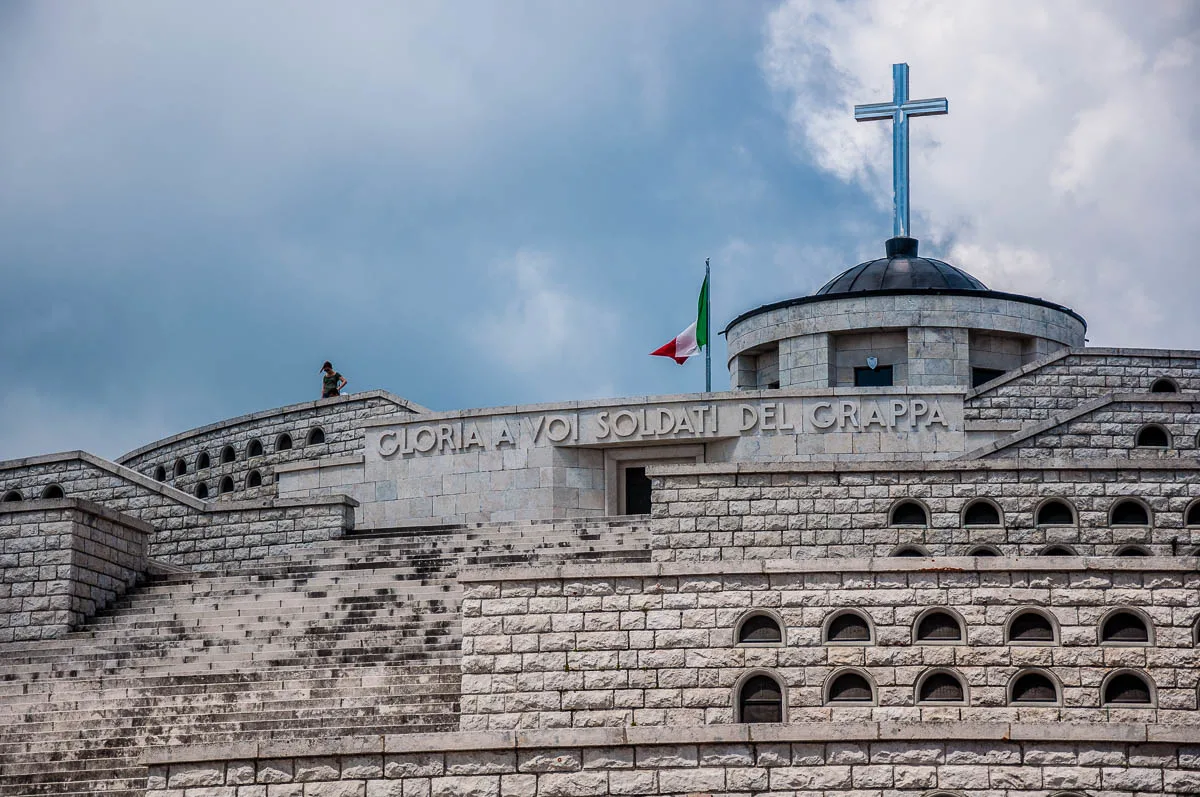
Italy’s former military forts are amazing places to visit in order to learn more about the country’s recent history. Many of them were built between the 1860s and the start of the 20th century on what was then the border between the Kingdom of Italy and the Austro-Hungarian Empire.
Nowadays, the former borderlands are part of the Autonomous Northern Italian region of Trentino-Alto Adige in the northern extremity of the country. Many of the forts there are now restored and open for visits.
Dotted around the northern tip of Lake Garda, on the Asiago Plateau in the Veneto, and throughout the lush forests and mountains of Trentino-Alto Adige, these forts are a must-see. Even if military history is not your forte, you begin to get an understanding of what it must have been to live always ready for attack.
The long dark corridors, the cold walls, the beautiful but inaccessible location, the military discipline, the freezing winters. It must have been quite soul-destroying.
I described my impressions of visiting one of Italy’s former military forts – Forte Belvedere – under point 7 in this blog post. Have a look:
Another must-see place in Italy, especially if military history is an interest of yours, is Monte Grappa – a 1775 m high mountain in Veneto, Italy. Monte Grappa was one of the most important pillars of the Italian defence during World War I and a refuge for Italian partisans during World War II.
A military memorial (pictured above) was inaugurated on Monte Grappa on 22 September 1935. In its central body lie the remains of 12,615 soldiers, most of whom are unknown.
If you are not planning to visit Northern Italy and yet you would like to explore the country’s former military forts, then you can visit some of the Forts of Rome. Around the Italian capital, there are 15 forts and four batteries that were built towards the end of the 19th century.
10. Italy’s Centuries-Old Pharmacy Shops
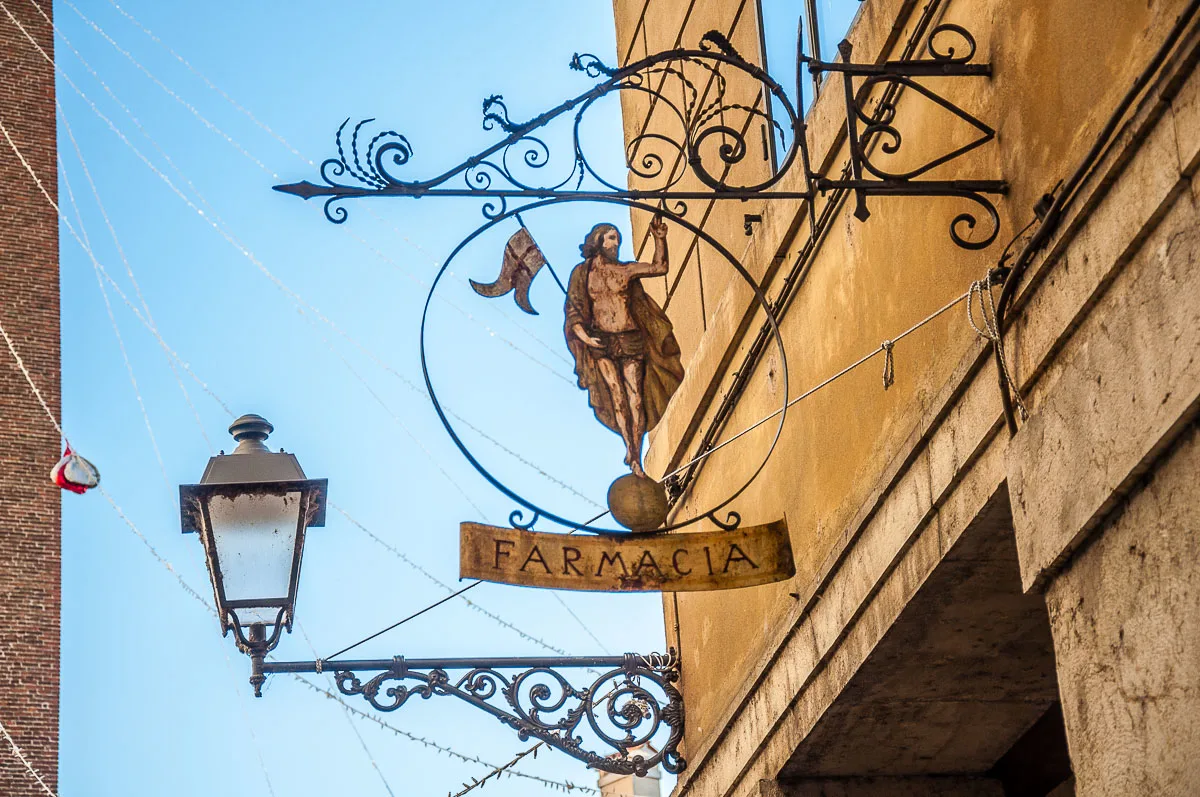
Farmacia Santa Maria Novella in Florence must be the world’s most famous pharmacy shop. Founded in 1221, it’s still going strong. It produces its own highly sought-after lines of skincare and home fragrances. It’s in this Florentine pharmacy that Hanibal Lecter buys a refined almond soap as a gift for Clarice Starling.
And while Farmacia Santa Maria Novella is nowadays one of Florence’s must-see sights, Italy has many more antique pharmacies that are some of the most amazing places to visit here. Preserving their old ceramic jars and beautifully carved wooden shelves and cabinets, they keep centuries-old recipes for cures and remedies.
If you are in Venice, for example, don’t miss the Farmacia ai Due S. Marchi. This is an 18th-century pharmacy preserved in its entirety as a museum exhibit in the lavish Ca’ Rezzonico.
Many of Italy’s old pharmacies, however, continue functioning to this day. Some of the most beautiful ones are:
- Spezieria di S. Maria della Scala in Rome, Lazio
- Farmacia al Lupo Coronato in Venice, Veneto
- Farmacia di Campo San Fantin in Venice, Veneto
- Farmacia Dolci in Chiavenna, Lombardy
- Farmacia Baldi in Lucca, Tuscany
- Farmacia al Redentor in Vicenza, Veneto (pictured above)
- Spezieria di Roccavaldina, Sicily
- Farmacia Lo Balbo in San Fratello, Sicily (with an incredibly decorated ceiling!)
- Farmacia Andreis in Carru’, Piedmont
You can also have a look at the website of the Italian Academy for the History of Pharmacy for more ideas for historic pharmacies to visit in Italy.
In Conclusion
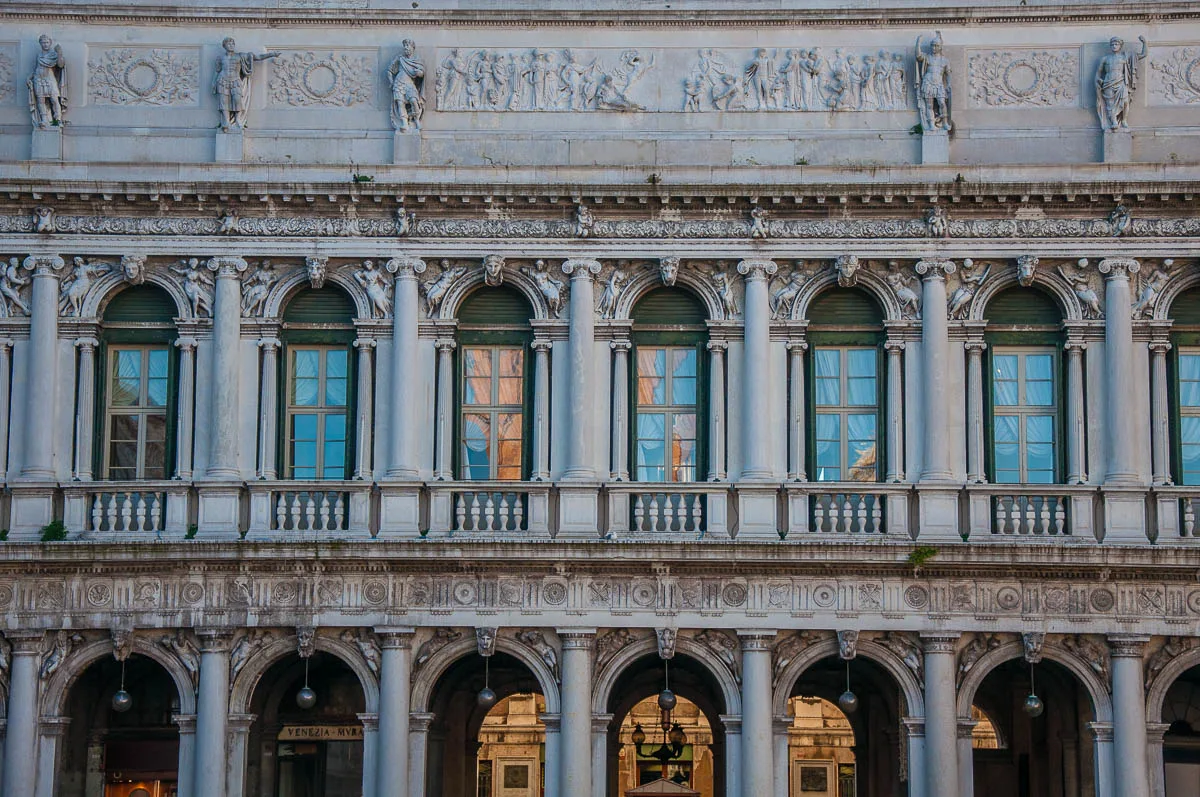
For its history and art, Italy is an amazing place to visit. Traditionally, the country’s world-famous museums attract the largest numbers of foreign visitors.
If you want to explore Italy from a wider perspective and get to experience different layers of the Italian traditions and culture authentically, then there are many more amazing places to see here beyond the main museums.
In this blog post, I have given you detailed information about ten such amazing places to visit in Italy. From historic libraries and historic pharmacies to the birthplaces and the final resting places of Italy’s greatest artists, there are many wonderful and unique Italian destinations beyond the obvious.
I hope that the information provided and the specific sights pinpointed here will give you lots of ideas for things to do during your stay in Italy.
Enjoy exploring Italy’s amazing places!
Now get ready quick for your visit to Italy!
- Consult these guidebooks.
- Book train tickets in Italy.
- Rent a car in Italy.
- Research accommodation.
- Pick local tours and activities.
More Helpful Italy Info for You
Best of Italy: Italian Piazzas, Italian Markets
Food of Italy: Italian Food, Italian Coffee Culture, Rules of Italian Breakfast, Italian Breakfast Foods
Northern Italy: 18 Best Cities to Visit, 11 Major Airports
Day Trips in Italy: Bologna to Venice, Milan to Verona, Venice to Verona, Milan to Venice, Florence to Venice, Verona to Venice, Venice to Padua
Lake Garda Towns and Villages: Best Towns, Riva del Garda, Malcesine, Torri del Benaco, Punta di San Vigilio, Campo di Brenzone
Visiting Lake Garda: Lake Garda with Kids, 8 Best Airports, Milan to Lake Garda, Venice to Lake Garda, Verona to Lake Garda, Travelling Around Lake Garda
Lake Como: Things to See, Nesso
Veneto: Best Cities to Visit, Top 15 Places, 30 Adventures, 15 Most Colourful Places, Beautiful Lakes
Lombardy: Best Cities and Towns
Friuli Venezia Giulia: Venzone, Most Beautiful Villages
Emilia Romagna: Bologna, Ravenna, Comacchio, Most Beautiful Villages
Marche: 6 Reasons to Visit, Gradara, Frasassi Caves, Temple of Valadier
Trentino: Best Cities and Towns, Beautiful Lakes, Lake Caldonazzo, Violins’ Forest
Venice: Essential Tips, Hidden Gems, Best Airports, Boats in Venice, Haunted Venice, Day Trips from Venice, Arco del Paradiso
Verona: Things to Do in One Day, Verona Opera Festival, Day Trips from Verona
Padua: Things to Do in One Day, 101 Facts About Padua, 10 Reasons to Visit Padua, Day Trips from Padua
Vicenza: Things to Do, Day Trips from Vicenza
